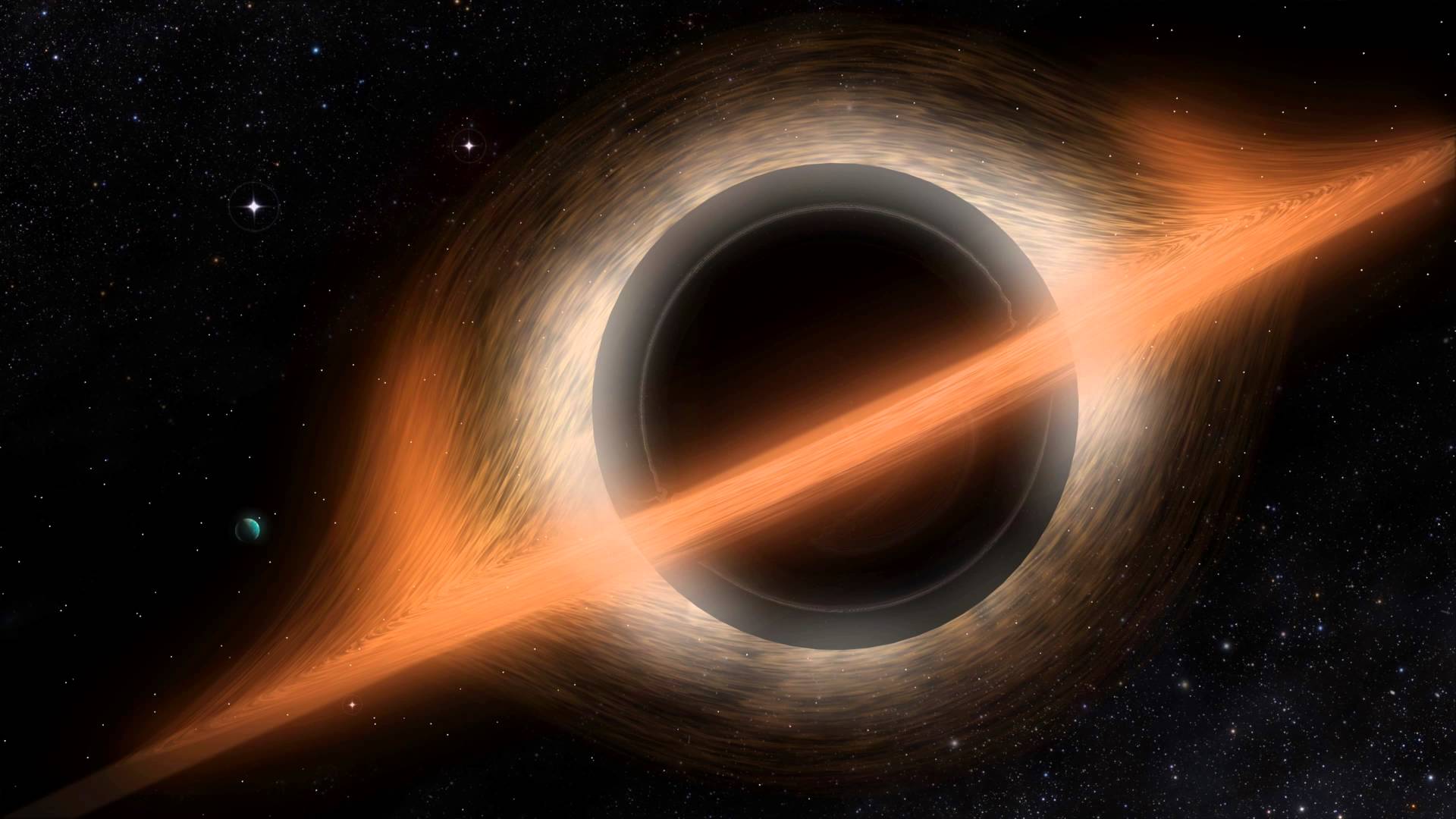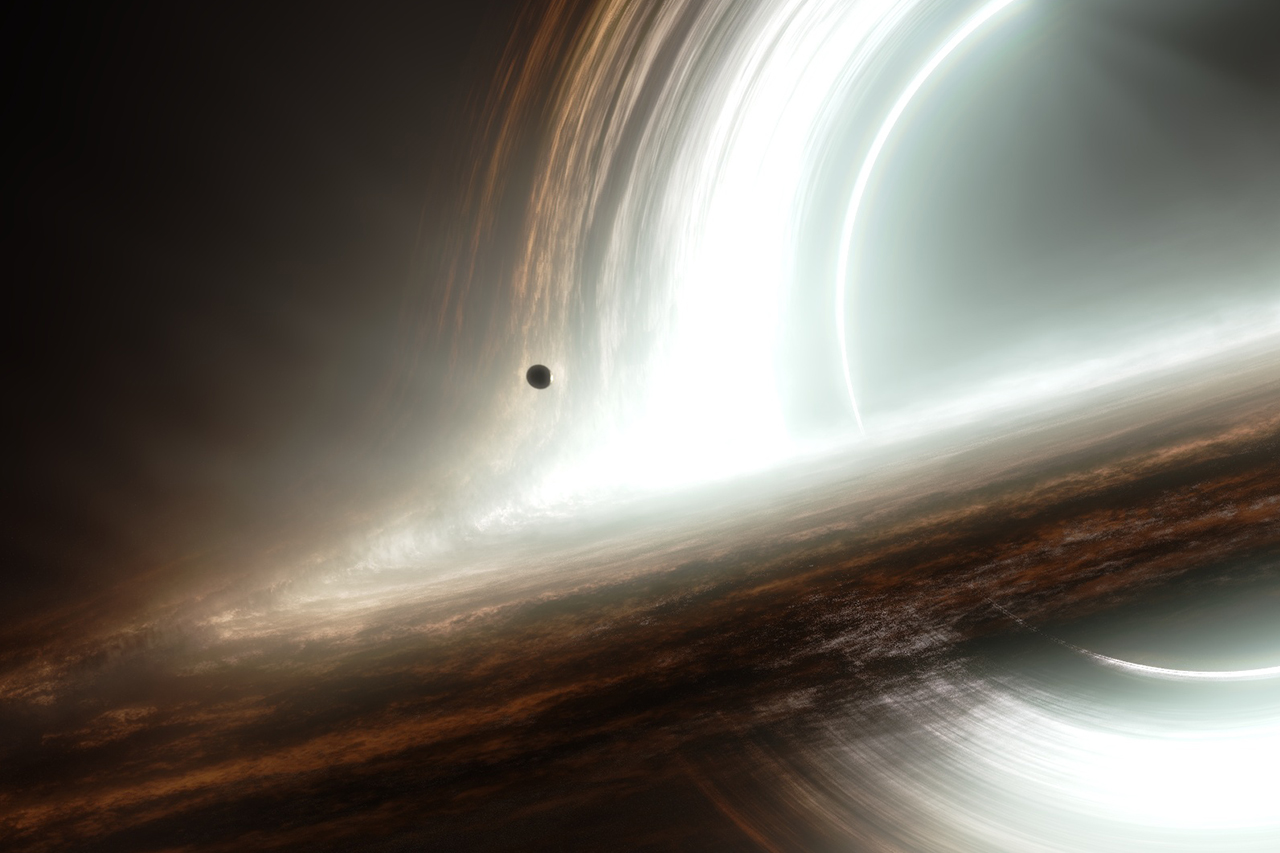

This difference in speed separates the “knots” of light around the black hole, which creates those distinctive dark bands in the light disk.īut what’s really important, obviously, is the fact that Christopher Nolan and the crew of Interstellar crushed their film’s visual representation-no surprise considering the film resulted in a published physics paper.

NASA notes that “Bright knots constantly form and dissipate in the disk as magnetic fields wind and twist through the churning gas.” The space agency adds that the gas nearest to the black hole orbits at a faster speed (nearly the speed of light) relative to the the gas that orbits from further away. The physics producing the bizarre site are equally incredible. This means the black hole was rotating at a high velocity, not causing.
INTERSTELLAR BLACK HOLE MOVIE
Apparently that’s a singular ring, not two going around along the X and Y axes. The black hole depicted in the movie was said to have a gentle singularity. Take a second and really stare at the black hole and the surrounding ring of light. NASA says in the post associated with the visualization that “this new visualization of a black hole illustrates how its gravity distorts our view, warping its surroundings as if seen in a carnival mirror.” The post adds that the black hole’s unthinkably high gravity also skews the light coming from different parts of its surrounding accretion disk, which gives it that “misshapen appearance.” NASA has, of course, delivered an endless number of awesome space visualizations before, so it’s no surprise this one of a black hole is pretty awe-inspiring as well.

Although we now also have this new Interstellar-esque visualization of a black hole from NASA to help our imaginations. We’ve heard about how they light up as they feed and how some of them are surrounded by a “ clumpy doughnut of matter,” but still, this picture of one taken in April of this year is probably the closest we’ve come to having a true understanding of what one looks like. Black holes, which warp the fabric of spacetime to the point where not even light can escape them, are difficult to imagine.


 0 kommentar(er)
0 kommentar(er)
